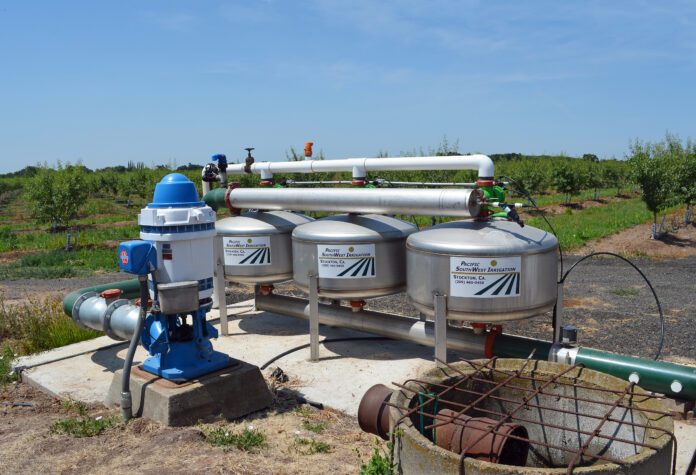
Last month, The U.S. Food and Drug Administration (FDA) published its final rule on agricultural water. The revised requirements are intended to enhance public health by improving the safety of water used in produce cultivation. The revisions are also designed to be practical across various agricultural water systems, uses, and practices, while remaining adaptable to future advancements in agricultural water quality science. The final rule replaces certain preharvest agricultural water requirements for covered produce (other than sprouts) in the 2015 produce safety rule with requirements for systems-based agricultural water assessments to determine and guide appropriate measures to minimize potential risks associated with preharvest agricultural water. Specifically, this rule:
• Establishes requirements for agricultural water assessments that evaluate a variety of factors that are key determinants of contamination risks associated with preharvest agricultural water. This includes an evaluation of the water system, water use practices, crop characteristics, environmental conditions, potential impacts on water from adjacent and nearby land, and other relevant factors.
• Includes testing preharvest agricultural water as part of an assessment in certain circumstances.
• Requires farms to implement effective mitigation measures within specific timeframes based on findings from their assessments. Hazards related to certain activities associated with adjacent and nearby land use are subject to expedited mitigation.
• Adds new options for mitigation measures, providing farms with additional flexibility in responding to findings from their preharvest agricultural water assessments.
Farms are required to conduct assessments of their preharvest agricultural water annually, and whenever a significant change occurs, to identify any conditions likely to introduce known or reasonably foreseeable hazards into or onto covered produce or food contact surfaces. The rule also finalizes the dates for compliance with the preharvest agricultural water requirements for non-sprout covered produce as follows:
• For very small farms: April 5, 2027
• For small farms: April 6, 2026
• For all other farms: April 7, 2025
Annual water assessments should take into consideration certain factors: agricultural water systems, agricultural water practices, crop characteristics, environmental conditions and other relevant factors. For agricultural water systems, consider the location and nature of the water source such as ground water vs surface water.
Also, evaluate the type of water distribution system, whether it is open or closed to the environment. Assess the degree of protection from potential contamination sources, including other users, animal impacts, adjacent and nearby land uses related to animal activity and the application of biological soil amendments. For agricultural water practices, consider the application method used, such as overhead sprinkler or spray, drip, furrow and flood. The time interval between the final direct application of agricultural water and the harvest of the covered produce should also be considered. The assessment should include the susceptibility of the covered produce to surface adhesion or internalization of hazards. Unlike other commodities, walnuts have a hard outer shell that acts as a barrier to the edible meats. The assessment requires considering the frequency of heavy rain or extreme weather events that may impact the agricultural water system by stirring sediments that could contain human pathogens or by damaging the product. Damage can increase the susceptibility of the product to become contaminated. Additionally, consider air temperatures and sun (UV) exposure.
Based on the findings of the agricultural water assessments, you must determine if corrective or mitigation measures are necessary to reduce the potential for contamination associated with preharvest agricultural water.
The final rule includes a requirement for supervisory review of the written preharvest agricultural water assessment and the determinations that were made based on the outcomes of the assessment.
The farm can be exempt from conducting a conducting a preharvest agricultural water assessment if it demonstrates their preharvest agricultural water for covered produce:
• Meets certain requirements that apply for harvest and postharvest agricultural water,
• Water received from a public water system or supply that meets requirements and the farm maintains water system results or certificate of compliance, or
• Is treated water in accordance with the standards in the Produce Safety Rule.
And it is reasonably likely the quality of the aforementioned water will remain unchanged before being used as agricultural water.
The rule does not alter existing requirements for harvest and postharvest agricultural water activities. The compliance dates for this portion of the rule and requirements for harvest and postharvest agricultural water activities for large and small farms have already passed. These requirements differ from those for preharvest water.
FDA has stated the agency is committed to taking an “educate before and while we regulate” approach to supporting compliance. Along with the rule, FDA also released a number of fact sheets that offers more details on factors for conducting these assessments (fda.gov/media/178221/download?attachment). The FDA has also updated the Agriculture Water Assessment Builder (fda.gov/food/food-safety-modernization-act-fsma/agricultural-water-assessment-builder).

By Roger A. Isom | President/CEO, Western Agricultural Processors Association
Roger is President/CEO of the California Cotton Ginners and Growers Association and Western Tree Nut Association. He brings over 30 years of regulatory and legislative advocacy experience, specializing in environmental and safety matters. Roger’s responsibilities include the management of both Associations’ staff and day-to-day operations. Roger is also the President of the Ag Energy Consumers Association (AECA), board member and Past President of the Ag One Foundation at California State University Fresno, and manages the Navel Orangeworm Action Committee (NOWAC).















